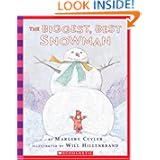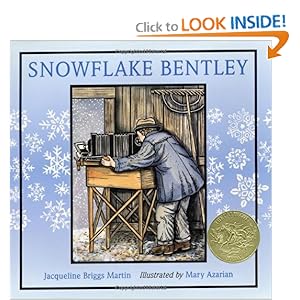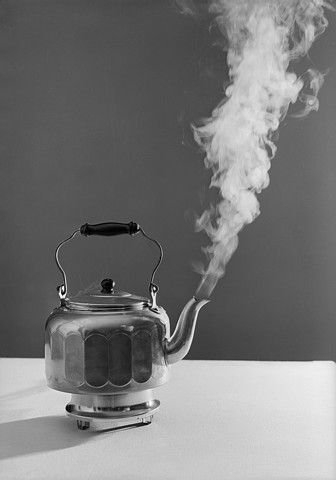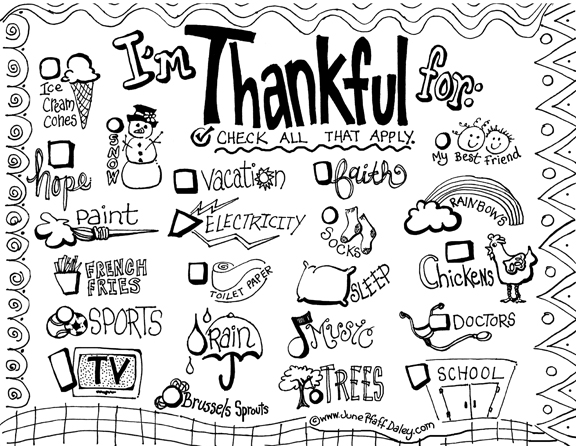Letter: "S"
 Print coloring page HERE
Print coloring page HERE
Have the children first trace the letter with their finger. Next trace it with a crayon before coloring the page.
Color: White
The best way to show preschoolers "white" is to use white chalk on black paper! For this lesson, ask them to draw a winter picture.
SCIENCE - What is snow?
Snow is a type of precipitation. Precipitation includes rain, sleet, and snow. When the weather is warm, water falls from the sky as rain. When the weather is cold, water becomes frozen and falls from the sky as snow.
Water can be many different forms such as liquid, which is the water we drink or bathe in, frozen, which is the ice cubes we put in our drinks or snow, or steam, which is what floats up when we boil a pot of water or run a hot bath.
When water is "room temperature" it is liquid. When it is really cold it is ice or snow. When it is really hot it is steam.
EXPERIMENT!
If your child doesn't get to see snow much (like mine) it is fun to make your own by shaving ice cubes. A good way to make snow (really shaved ice) is to take a cardboard milk container and cut it in half and thoroughly clean it out. Fill it with water and let it freeze for 2 days. Then use a cheese grater to shave the ice. This will be as close to snow as you can get if you don't have access to the real thing.
If you have snow where you live, this is still a fun experiment. You are lucky that you can just go outside and do it!
Once you have your ice, allow the children to explore it. Touch it, how does it feel? What happens if you hold some in your hand? How does it change? Taste it. What does it taste like? Squeeze some together. Can you make a ball? Provide shovels or other items to manipulate it with.
STORY - "Mouse's First Snow" , "The Biggest, Best Snowman!" & "Snowflake Bently"
 Available through Amazon: http://www.amazon.com/Mouses-First-Snow-Lauren-Thompson/dp/0689858361/ref=sr_1_1?s=books&ie=UTF8&qid=1351190317&sr=1-1&keywords=mouse%27s+first+snow
Available through Amazon: http://www.amazon.com/Mouses-First-Snow-Lauren-Thompson/dp/0689858361/ref=sr_1_1?s=books&ie=UTF8&qid=1351190317&sr=1-1&keywords=mouse%27s+first+snow
A story all about the fun this little mouse has playing in his first snow.
 Also through Amazon: http://www.amazon.com/Biggest-Best-Snowman-Margery-Cuyler/dp/0590139223/ref=tmm_hrd_title_0?ie=UTF8&qid=1351256059&sr=1-1
Also through Amazon: http://www.amazon.com/Biggest-Best-Snowman-Margery-Cuyler/dp/0590139223/ref=tmm_hrd_title_0?ie=UTF8&qid=1351256059&sr=1-1This is a terrific story about a little girl who was told she is too small to do anything, but she shows everyone when she makes the biggest, best snowman!
 http://www.amazon.com/Snowflake-Bentley-Caldecott-Medal-Book/dp/0395861624
http://www.amazon.com/Snowflake-Bentley-Caldecott-Medal-Book/dp/0395861624This is something a little different. Check this one out, it is really amazing and will capture your child's imagination!
POEM - "Winter Time Poem"
by Mary Ryer
Icy fingers, icy toes, Bright red cheeks and bright red nose.
Watch the snowflakes as they fall,
Try so hard to count them all.
Build a snowman way up high,
See if he can touch the sky.
Snow forts, snowballs, angels, too,
In the snow, so white and new.
Slip and slide and skate so fast.
Wintertime is here at last.
MATH - Snowflake Number & Pattern Matching
For the numbers version, write numbers 1-5 on the large snowflakes. Help the children place the numbers in the correct order. Then ask them to count out the small snowflakes and place the correct number of them with the corresponding numbered snowflake. For example, place 5 small snowflakes with the large snowflak numbered "5".
For pattern matching, make a line of snowflakes in a pattern using the different sizes. For example, place 1 large, 1 small, 2 medium, 1 large in a line. Then have the children match the pattern you made with their own line of snowflakes.
CRAFT - Snowy Tree
Materials Needed:
Grey or Light Blue construction paper
Brown craft paint
Cotton Balls
Glue
Give each child a piece of paper. Coat their forearms and hands in the brown paint make an imprint on the paper. It will look like a tree! After allowing the tree to dry, ask them to add "snow" to their branches using the cotton and glue. They can also draw snow or other items in their winter picture.
**UPDATE - They actually used a cutout felt tree this year! It still came out super cute :)
MUSIC (and math!) - "Snowmen"
There were five little snowmen, Each with scarf and woolly hat, Out came the sun and melted one; It's sad- But that was that!
There were four little snowmen etc.
There are no little snowmen, Just scarves and woolly hats, Sitting in a puddle In a very wet muddle; It's sad -But that is that!
COMMUNITY - Snow Plow Drivers
When the roads are covered in snow, people who drive Snow Plows come out to move the snow off of the roads to make it safer to drive on it. Snow and ice is very slippery and cars can slip too. Snow plow drivers are really helpful! They come out when it is really cold and windy to help make sure people are safe in their cars.
If you love the snow and driving big rigs, the job of a Snow Plow Driver is the one for you. As a Snow Plow Driver, you operate the truck that shovels snow off the road’s surface to make it safe for cars and trucks. This is seasonal work, but be prepared to be on call when Mother Nature unleashes her fury.
SNACK - Marshmallow Snowmen
Ingredients:
Pretzel sticks
Raisins
Use the pretzel sticks to connect the mini marshmallows in order to make a head, body, and legs and the raisins can be their hands and feet. You can take it a step further and add a face and buttons using chocolate frosting.
COLORING - Kids playing in the Snow
































